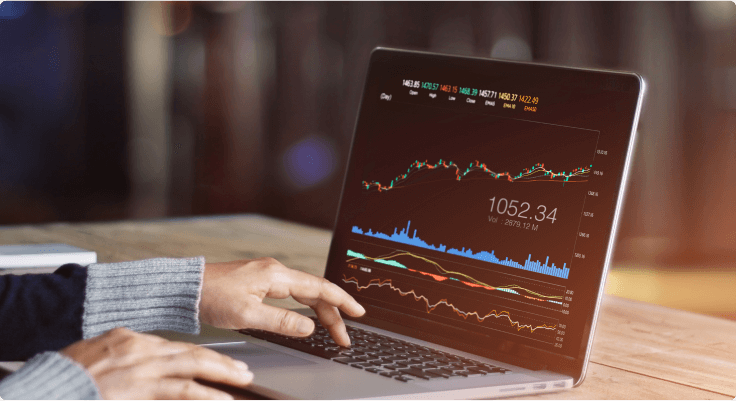Effective risk management is the cornerstone of any successful trading strategy. In our third article, we will take a deep dive into advanced techniques for hedging against downside risk and reducing portfolio volatility. From options strategies to dynamic asset allocation models, discover how to build a robust risk management framework that stands the test of time.
Multi-Asset Trading: Advanced Techniques for Hedging Against Downside Risk and Reducing Portfolio Volatility
In the realm of multi-asset trading, where portfolios encompass a diverse mix of asset classes, effective risk management is crucial. This article explores advanced techniques for hedging against downside risk and reducing portfolio volatility. From options strategies to dynamic asset allocation models, these methods help traders build a robust risk management framework that stands the test of time.
Understanding Multi-Asset Trading Again
Recap: Multi-asset trading involves investing across various asset classes such as equities, bonds, commodities, currencies, and real estate. This diversification aims to balance risk and return by leveraging the differing behaviors of each asset class under various market conditions.
Advanced Techniques for Hedging and Reducing Volatility
- Options Strategies for Multi-Asset Portfolios
Options are versatile instruments that provide significant hedging capabilities for multi-asset portfolios. Here are some advanced options strategies:
- Protective Puts: Purchasing put options for assets within the portfolio creates a safety net against significant price declines. This strategy is particularly effective in volatile markets, offering downside protection while maintaining upside potential.
- Covered Calls: Selling call options on assets held within the portfolio generates income through option premiums, which can offset potential losses from declining asset values. This strategy reduces volatility and can enhance returns in stable or moderately bullish markets.
- Collars: Implementing a collar involves buying protective puts and simultaneously selling covered calls on the same asset. This strategy limits both downside risk and upside potential, creating a bounded risk profile that stabilizes the portfolio’s value.
- Iron Condors: For portfolios exposed to a range of market conditions, the iron condor strategy involves selling both call and put spreads, thus profiting from low volatility while hedging against significant price movements in either direction.
- Dynamic Asset Allocation Models
Dynamic asset allocation models adjust the portfolio’s composition in response to changing market conditions, optimizing risk and return profiles.
- Constant Proportion Portfolio Insurance (CPPI): This technique allocates a fixed proportion of the portfolio to a risky asset and the remainder to a risk-free asset. The allocation is adjusted based on the portfolio’s value relative to a predetermined floor, thus providing downside protection.
- Tactical Asset Allocation (TAA): TAA involves short-term adjustments to the portfolio based on market forecasts and economic indicators. By dynamically shifting investments among asset classes, traders can capitalize on market opportunities and mitigate risks.
- Risk Parity: This approach balances the risk contributions of different assets in the portfolio, ensuring that each asset class has an equal impact on overall portfolio risk. This diversification strategy minimizes the impact of volatility in any single asset class.
- Volatility Reduction Techniques
Reducing portfolio volatility is essential for long-term stability and performance. Here are key techniques:
- Diversification: Spreading investments across various asset classes, sectors, and geographies reduces exposure to specific risks and smoothens portfolio returns.
- Low Volatility Funds: Incorporating low volatility ETFs or mutual funds into the portfolio can help mitigate the impact of market fluctuations, providing more stable returns.
- Volatility Targeting: This technique involves adjusting the portfolio’s exposure to different assets based on their volatility levels, aiming to maintain a consistent level of overall portfolio risk.
Risk Management Tools and Technologies
Utilizing advanced tools and technologies enhances the effectiveness of these strategies:
- Algorithmic Trading Platforms: Automated systems execute complex strategies with precision and speed, reducing the risk of human error and ensuring timely responses to market changes.
- Portfolio Management Software: These tools offer real-time analytics, risk assessment, and scenario analysis, aiding in the implementation and monitoring of dynamic asset allocation and hedging strategies.
- Artificial Intelligence and Machine Learning: AI and ML algorithms analyze large datasets to identify patterns and predict market movements, optimizing hedging strategies and enhancing decision-making processes.
Continuous Monitoring and Adjustment
A robust risk management framework requires continuous monitoring and adjustment to remain effective:
- Regular Portfolio Reviews: Periodic evaluations of the portfolio’s performance and risk exposure help identify necessary adjustments and ensure alignment with risk management objectives.
- Stress Testing and Scenario Analysis: Simulating extreme market conditions to evaluate how the portfolio would perform under adverse scenarios helps identify vulnerabilities and implement preemptive measures.
- Performance Metrics: Utilizing key performance indicators (KPIs) such as the Sharpe ratio, Sortino ratio, and maximum drawdown to assess the effectiveness of hedging strategies and overall portfolio stability.
Conclusion
Advanced techniques for hedging against downside risk and reducing portfolio volatility are essential for managing multi-asset portfolios effectively. By leveraging sophisticated options strategies, dynamic asset allocation models, and cutting-edge technologies, traders can build a robust risk management framework that ensures long-term stability and success. Continuous monitoring and adjustment further enhance the resilience of the framework, enabling it to withstand the test of time in an ever-evolving trading environment.
Open an account and start trading on the Phillip Nova 2.0 platform. Multi-Asset Trading, using Only One account.













